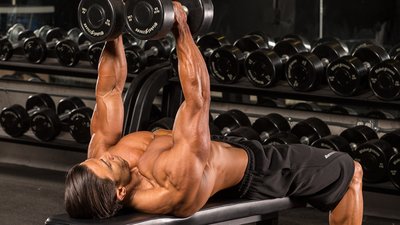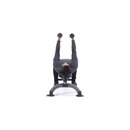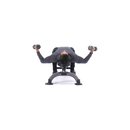On chest day, it's normal to begin your training session with challenging multijoint exercises before finishing up with isolation moves. Heavy presses go up front, pec-deck flyes at the tail end. That's how countless great chests were built, so why would anyone mess with it?
Well, because sometimes, the exact opposite of what works also works. And the opposite of the conventional bodybuilding workout is the pre-exhaust workout, where you do isolation moves for the chest first, followed by multijoint presses.
If you've been training for a while and in need of a fresh stimulus, turning your conventional workout on its head could give your chest a boost it hasn't had in a long time. Some lifters find that it ends up being easier on their joints as well—as long as it's done correctly. And if you measure a good workout by the degree of next-day muscle soreness, this approach will knock it out of the park.
How Pre-exhaust Works
By starting with the single-joint move in a pre-exhaust, you'll largely engage the chest fibers first, unlike pressing motions, which also recruit the front delts and triceps. After multiple sets, your chest becomes increasingly fatigued, but the secondary muscle groups remain fresh.
Once you get to those multijoint presses, your chest—not your triceps or delts—is going to reach muscle failure first. In contrast, when you do multijoint exercises first in your workout, the exercise often ends when the assistance muscle—not the targeted muscle—has fatigued.
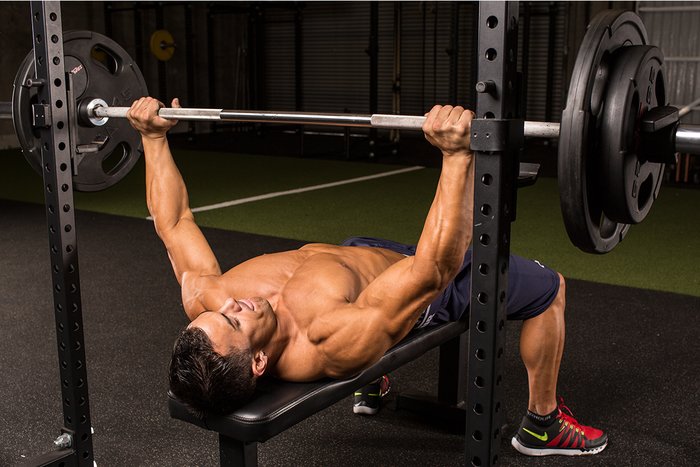
Pre-exhaust routines can also be done for other body parts. For legs, it will usually start with a single joint movement like leg extensions, then move to squats. For shoulders, perform lateral raises or another isolation move followed by presses. There are ways to do pre-exhaust for other groups, like the lats and triceps, but honestly, I don't find the technique to be nearly as effective as it is for legs, chest, and shoulders.
How to Get Pre-exhaust Right: Weight Selection and Sequencing
Don't be disappointed at the end of your workout if you're benching far less weight than you normally would. Your ego is in for a bruising if that's the case! Pushing your multijoint movements back in your routine surely means you won't be able to lift the same loads or do the same number of reps. This is one reason experienced bodybuilders like pre-exhaust training: it allows them to get a great training effect from lighter loads on presses, putting less wear and tear on their joints.
If you're going to use dumbbells for a press, like the decline press in the workout below, do it early in the presses—not at the end. You might even consider doing the last movement on a machine, so you can focus on just pushing rather than having to balance the weight, which can limit the amount of weight you can use. The further you get into the workout, the better this choice becomes.
How to Get It Wrong: Falling into the Fly Trap
Doing your last exercise first means you'll be able to attack it with full force. Yes, you'll be able to use more weight, and quite possibly do more reps, one heckuva formula to spur growth. But remember that single-joint movements can put more pressure on joints like the elbows, especially when you're using additional weight. My recommendation would be to use a weight you can still do for at least 8-10 reps rather than shooting for sixes or lower as you might do with presses.
Using too much weight on presses also leaves you more likely to press your flyes rather than, well, fly them. It's essential to maintain a slight bend in your elbows throughout the duration of the set. Opening and closing at the joint, which is easiest to spot on cable cross-overs, turns this single-joint movement into a multijoint one, defeating the entire purpose of the pre-exhaust.
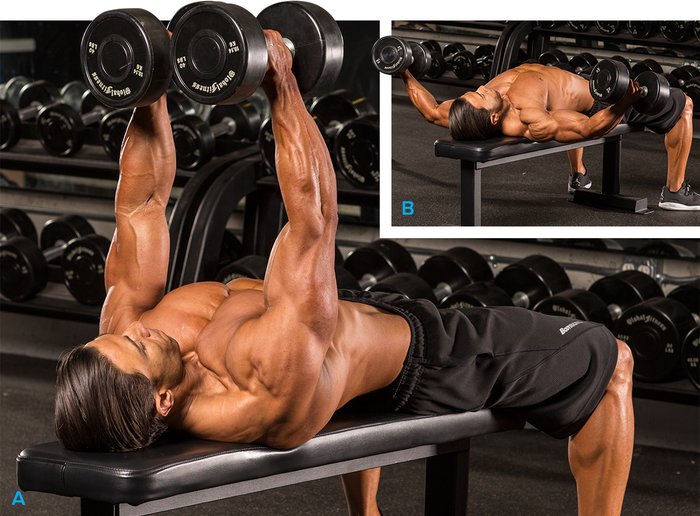
Dumbbell flyes
Have any doubt that the bend in your elbows is the same at the bottom of the movement as at the top? Watch your form in a mirror, or have a sharp pair of eyes do it for you.
If you're still having trouble with elbow position, select a lighter weight, or switch to the pec-deck machine and practice there. The pec deck essentially locks your elbows in the correct position, preventing you from pressing the weights. Get your form down before trying it with free-weight movements.
Pre-Exhaust Chest Workout
- Warm-up well, then choose 1-2 single-joint movements to start your chest workout. One movement is enough for most lifters. The second movement is for more advanced trainees who want an insane pre-exhaust.
- Take your working sets of pre-exhaust movements near muscle failure. Adjust your weights from set to set as needed depending on how many reps you reach.
- For the second part of the workout, choose several compound movements for chest from different bench angles. If you're going to do dumbbells, do them earlier rather than later because of their difficulty to control. Adjust your poundage as necessary from set to set to reach the suggested target rep.
- A spotter is recommended on your multijoint exercises, because your strength is compromised. Consider machine movements toward the end of your chest workout to better control the weight.
- Follow this type of training for no more than about six weeks before returning to a more conventional style of training. Or, you can do this kind of workout infrequently for a change of pace.
- The following workout follows a basic pyramid structure, but it can be set up in other ways as well.
- Make exercise substitutions based on personal preferences or to target weaknesses.
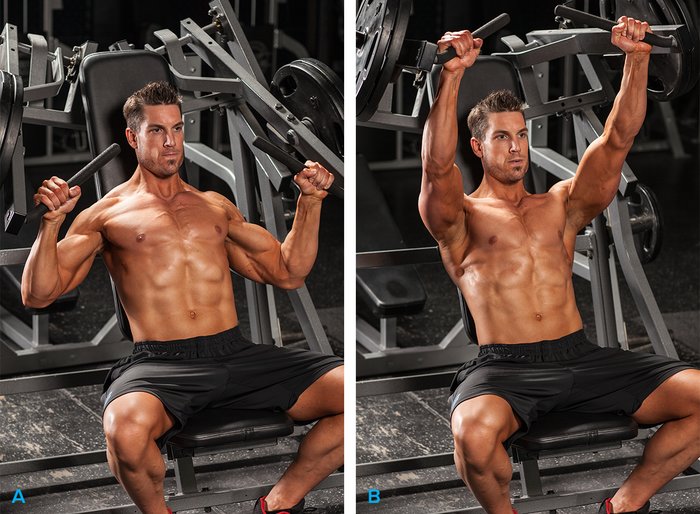
Leverage incline chest press

BodyFit
$6.99/month- 2,500+ expert-created single workouts
- 3,500+ how-to exercise videos
- Detailed workout instruction
- Step-by-step workout tips
- Training at gym or at home
- Access to Workout Plans
- Access to Bodyfit App
- Store Discounts
Already have a Bodybuilding.com account with BodyFit? Sign In

What comes with BodyFit?

- Instructional Videos
Don't risk doing a workout improperly! Avoid injury and keep your form in check with in-depth instructional videos.

- How-to Images
View our enormous library of workout photos and see exactly how each exercise should be done before you give it a shot.

- Step-by-Step Instructions
Quickly read through our step-by-step directions to ensure you're doing each workout correctly the first time, every time.


